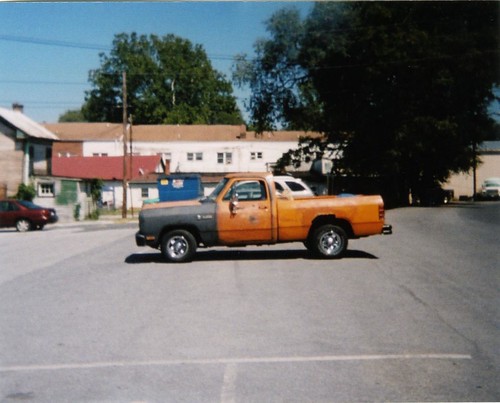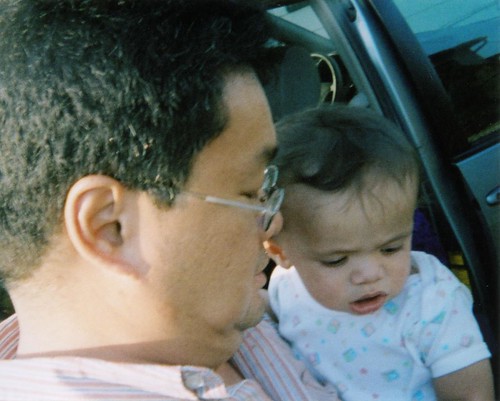The camera is designed to look like a small book, with gentle deer gracing the cover and assuring the potential subject on the street that this person approaching you is simply learning about nature. But really, who would this fool? The book's "spine" swings out on a hinge to reveal the lens, though cameras look nothing like this anymore and maybe some unsuspecting person would not raise an eyebrow when confronted by this mild device. I would not know, as I did not take advantage of the surreptitious feature of the calm pea-green design. You are getting sleepy.
The book camera takes 110 film, a cartridge format introduced by Kodak in 1972. A few years ago I found some of the first pictures I'd ever taken, made with some 110 Instamatic in the mid 70s for a school project about Neanderthal Man. I blogged more about it here, in one of my posts on the weeding and decluttering that I have lately neglected.
110 is one of the lowest-resolution film formats - the negative is barely bigger than a postage stamp, another cultural artifact that, like film, is either not long for this world or is likely to be relegated to use by niche markets and hipsters. Because what hipster doesn't like to use stamps? So 110 film is hard to come by (I had to cannibalize a Kodak 400 cartridge from another Superheadz camera to use with the book) and even harder to process. I had wrongly assumed that the local Walgreens where I've been taking my toy camera film for developing and scanning would be able to handle 110, and as is my wont I finished off the roll in the lab's vicinity.
 |
| Where America doesn't process 110 |





1 comment:
Boo to Walgreens but I love the look and the picture of you and the little!
Post a Comment